Introduction
Implementing a Customer Data Platform (CDP) is an important step for businesses. It helps you better understand your customers and improve your marketing strategies. When done well, a CDP can give you a complete view of customer interactions. Effective CDP implementation can lead to enhanced customer insights and engagement. This guide will help you understand the steps to implement a CDP effectively. Organizations often prioritize data unification strategies to create a comprehensive view of their customer data.
Initial Steps for Customer Data Platform Implementation: A Step-By-Step Guide
Assessing Business Goals and Objectives
Before you start implementing a CDP, it’s important to define your business goals and objectives clearly. This is a key step to ensuring your CDP matches your overall business plans. A clear understanding of the reasons behind customer data platform implementation will support your goals.
Identify Specific Goals: Start by deciding what you want to achieve. Goals can be improving customer segmentation, enhancing customer relationship management (CRM), or increasing customer retention rates. Write down these goals and make them detailed.
Utilize SMART Criteria: Use the SMART framework for your goals:
- Be specific. Make sure your goals are clear. Instead of “improve marketing,” say “increase email open rates by 20%.”
- Measurable: Make sure you can track progress with key performance indicators (KPIs) like conversion rates or customer lifetime value.
- Achievable: Set realistic goals based on your resources. Balance ambition with what is doable.
- Relevant: Make sure every goal matches your overall business strategy.
- Time-bound: Set deadlines. For example, plan a three-month period for the initial data integration, making sure to align it with customer data integration efforts.

Identifying Key Stakeholders and Forming a Project Team
Once you have your goals clear, identify key people and build a project team. This will greatly impact the implementation process. The success of customer data platform implementation often hinges on stakeholder engagement.
- Identify Stakeholders: Consider the people in your company who care about the CDP project. Key stakeholders are usually:
- Marketing Team: They will use it for personalized strategies.
- Sales Team: They will use customer insights to improve sales.
- IT Department: They will handle technical tasks.
- Customer Service: They will improve support with customer insights.
- Forming Your Project Team:
- Create a diverse team representing the different stakeholders. Include people from departments that will work with the CDP.
- Schedule a kickoff meeting to discuss goals, responsibilities, and timelines.
- Clearly define roles, such as a project leader and a data steward for data quality.
- Communication Plan: Make a plan that describes:
- How often updates will occur (weekly emails, monthly meetings, etc.)
- How you will communicate (email, chat apps, etc.)
- How you will record progress (using tools like Trello or Asana).
This organized approach keeps everyone informed throughout the implementation. Regular updates on the customer data platform implementation can enhance collaboration and ensure adherence to CDP best practices.
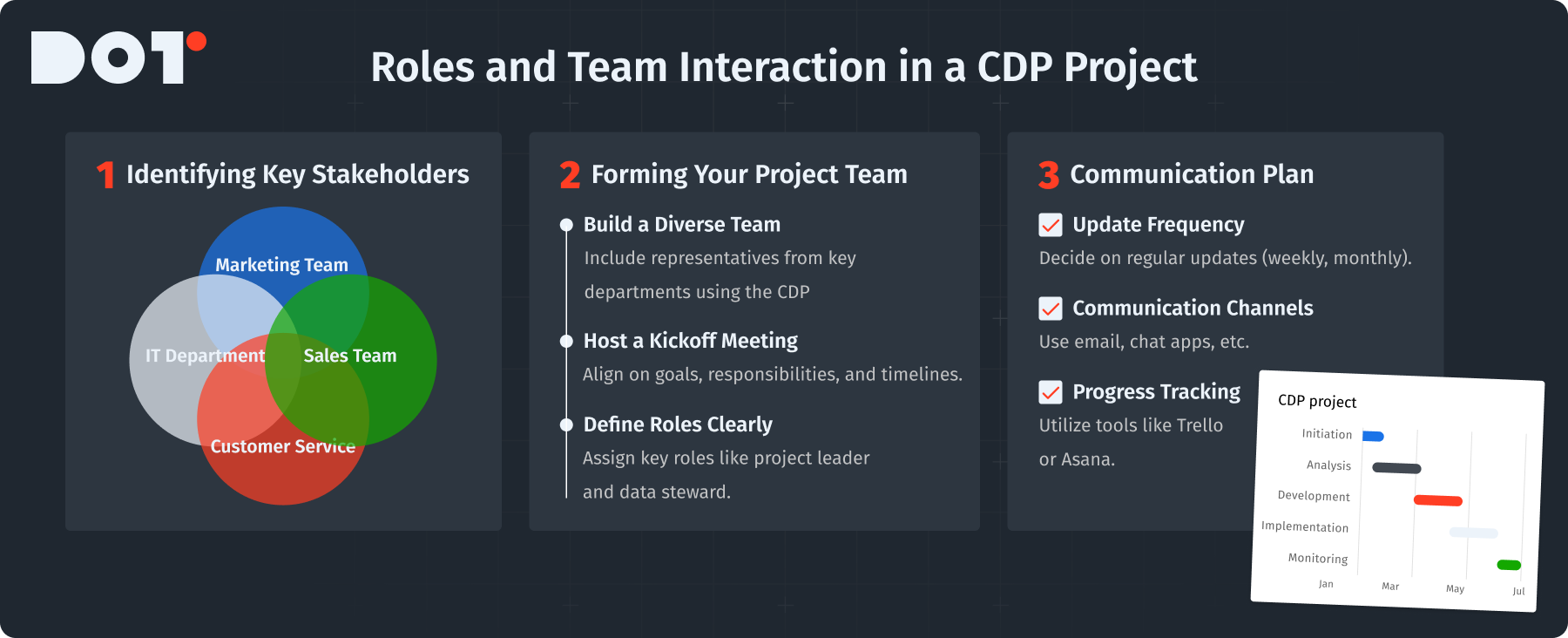
Choosing the Right CDP
Evaluating Business Needs and Requirements
Choosing the right CDP is very important because different platforms have different functions. Analyzing your current data systems will help you make a good choice. The alignment of features with your needs is critical for customer data platform implementation.
- Analyze Your Current Data: Assess the data your business currently collects. Think about:
- Behavioral Data: What customers do on your website or app.
- Transactional Data: Information about purchases or subscriptions.
- Demographic Data: Information like age, gender, and location.
- Integration Requirements: Identify which systems need to connect with the CDP. Make a list of current systems, their strengths, and weaknesses.
- Budget Constraints: Set a budget that includes:
Initial setup costs (software licenses, integration).
Ongoing maintenance fees and future upgrade costs.
Investor expectations that could be affected by the CDP project.
- User Experience Needs: Don’t forget how easy the system is for employees. Make sure the CDP is user-friendly for daily use. A positive user experience can ease the customer data platform implementation process and align with emerging user data privacy regulations.
Conducting Market Research to Compare Options
After evaluating your needs, the next step is to research available CDP options.
- Researching CDPs: Use well-known review sites like G2, Capterra, and Gartner to find customer reviews and pricing info.
- Creating a Requirements Checklist: Build a checklist based on your needs from the previous step. List the must-have features and nice-to-have features.
Important features can include:
Data integration capabilities
Reporting and analytical tools
User-friendly interface
- Rating Systems: As you research, rate potential CDPs on your checklist using a scale of 1-5 (1 being least desirable, 5 being most desirable).
- Product Demos: After narrowing down options, ask vendors for product demonstrations. Prepare examples that reflect your business needs to see how the system works.
- Collect Feedback: Get thoughts from team members who will use the platform. Their feedback is key in making the final decision.
Key Features to Look for in a CDP
Data Integration Capabilities
Integration is vital for an effective CDP. A good system can gather data from many sources, giving you a full view of customer interactions. Ensuring robust integration capabilities is essential for successful customer data platform implementation.
- Seamless Integration: Make sure the CDP can connect easily with existing systems like CRM, email providers, and data analytics tools.
- Multi-Channel Data Input: The CDP should support data from various channels, including:
Websites
Social media
Mobile apps
Offline sources (like point-of-sale systems)
- Real-Time Data Processing: Look for a platform that allows real-time data updates, as real-time customer insights are crucial for timely business decisions.
- API Availability: Confirm that the CDP provides an Application Programming Interface (API) for integrating third-party tools and future tech expansions.
User-Friendly Interface and Reporting Tools
A good CDP should be easy for anyone to use. The interface should support user adoption. A user-friendly interface can significantly boost the effectiveness of your customer data platform implementation.
- Intuitive Layout: Ensure the CDP has a clear design with easy navigation. Users should find information without needing too much training.
- Personalizable Dashboards: Look for platforms allowing users to customize their dashboards. This helps them focus on what matters most.
- Clear Reporting Tools: The reporting features should help users create and share reports easily. Look for:
Built-in templates for common reports.
Easy methods to build custom reports.
Options to export data like CSV or XLS for sharing insights.
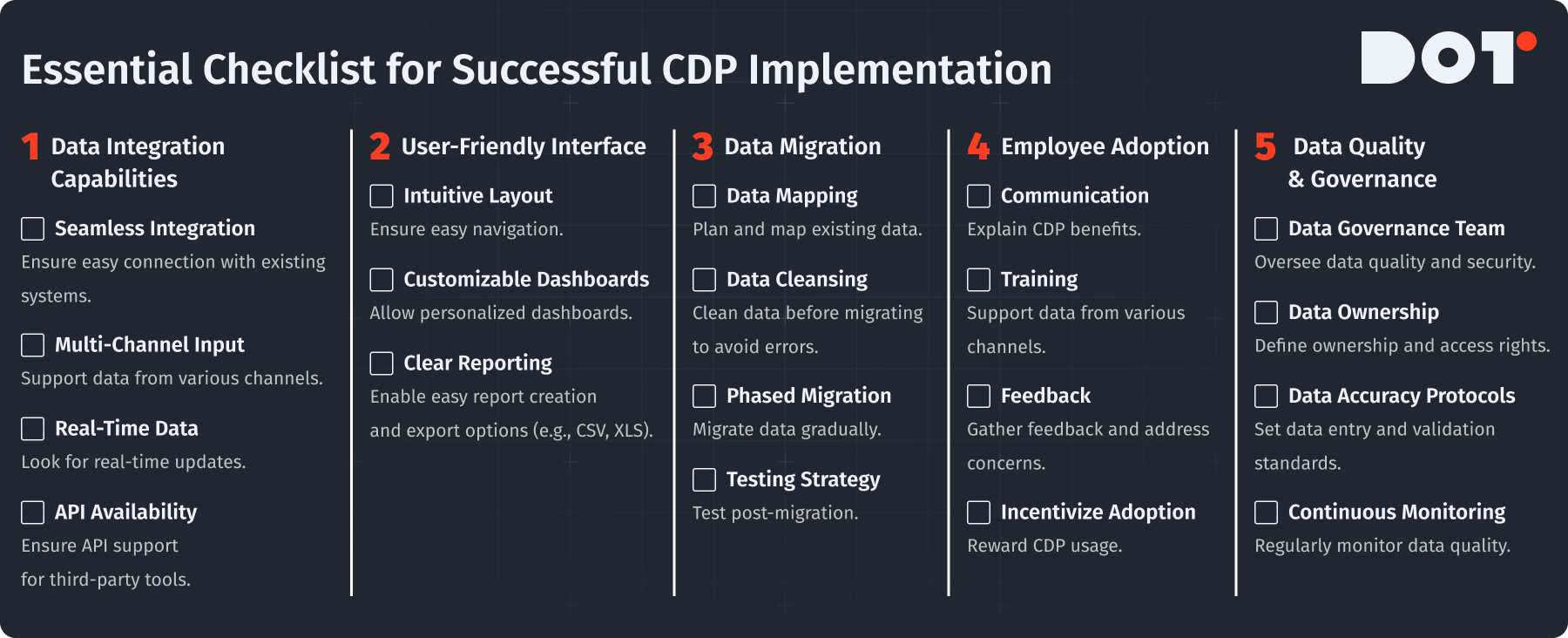
Want to see how this applies to your business? Schedule a free 20-minute consultation with one of our experts to discuss your plans for customer data platform implementation.
Common Challenges During Implementation
Data Migration Issues
Moving data from existing systems to the new CDP can be tricky. Here are some common challenges:
- Mapping Existing Data: Before you start, map what data you have and how it needs to change for the CDP.
- Data Cleansing: Clean your data before migration. Fix any errors and remove duplicates to avoid carrying bad data over.
- Phased Migration: Instead of moving all data at once, try a phased approach. Start with important data and add more gradually. This way, you can catch problems as they happen.
- Testing Strategy: After migration, run tests to ensure everything is accurate and data flows right. Ensuring data governance in CDPs is essential in this phase.
Resistance to Change from Employees
Some employees may resist using a new CDP. Here’s how to increase acceptance:
- Effective Communication: Explain the benefits of the CDP to employees. Show how it can make work easier and improve business success. Improved communication is essential for a smooth customer data platform implementation.
- Provide Training: Offer training sessions to help employees learn the new system. You may need different sessions for various skill levels:
Beginner: Overview of the CDP and basic functions.
Intermediate: More advanced features linked to specific roles.
Advanced: Customization options or troubleshooting.
- Gather Feedback: Encourage team members to share their thoughts or concerns about the new system to reduce resistance.
- Incentivize Adoption: Consider ways to motivate employees to use the new system, such as performance rewards related to CDP use.
Ensuring Data Quality and Integrity
Best Practices for Data Governance
Data governance is essential for keeping data accurate and safe.
- Establish a Data Governance Team: Create a team to manage data quality issues. It should include people from IT, marketing, sales, and compliance.
- Data Ownership Documentation: Define who owns specific data and who can access it. Training this team is important for accountability.
- Protocols for Data Accuracy: Set rules for how to keep data accurate. This includes:
Guidelines for data entry.
Validation checks for recorded information.
Regular audits to ensure data quality.
Continuous Monitoring and Validation of Data
Monitoring data quality is an ongoing task.
- Implement Data Monitoring Tools: Use tools that check data for errors regularly. This can automate alerts for any problems.
- Conduct Regular Audits: Plan regular audits to check for data trends or problems. Have a committee to handle these checks and address issues early.
- User Reports and Feedback Loops: Encourage users to report any data concerns they notice. They can share this feedback with the data governance team.
Have questions? Connect with a Dot Analytics expert for a free 20-minute consultation and get answers, especially regarding data quality in customer data platform implementation.
Timeline for Customer Data Platform Implementation: A Step-By-Step Guide
Phased Implementation Strategy
Implementing a CDP takes careful planning. A phased strategy reduces risks.
- Begin with a Pilot Project: Start with a small project using only a part of your total data. This trial helps you test the CDP’s capabilities.
- Evaluate Results: After the pilot, analyze the results. What went well? What could be better? Discuss these with your project team.
- Roll Out Gradually: After the pilot, expand the implementation gradually to cover more data and features.
- Iterate on Feedback: Keep using feedback from the pilot to improve the process.
Setting Realistic Expectations for Delivery
Having a clear timeline for the implementation is important for everyone involved.
- Base Timelines on Complexity: Use the pilot project to set timelines. Smaller businesses might need 3-6 months, while larger ones could take up to a year.
- Visualize the Timeline: Create a visual representation of your project timeline, including key milestones.
- Regular Status Meetings: Schedule meetings to review progress and milestones. Allow project leaders to share updates and any changes.
- Flexibility: Be ready to adjust timelines if things change. Implementing a CDP can be dynamic, and being flexible helps manage issues well.
Integrating Existing Systems with a New CDP
Assessing Current Infrastructure Compatibility
Before connecting your new CDP, analyze whether your current systems can work together.
- Inventory Existing Tools: Make a list of current software and systems in use. Understanding your ecosystem helps in integration.
- Check Compatibility: Meet with your IT team to check if current tools can connect to the CDP. Know the technical requirements, data formats, and APIs.
- Identify Required Modifications: Find out if you need updates or changes in existing systems to integrate with the CDP. Ensuring compatibility is essential for effective customer data platform implementation.
Developing an Integration Plan and Timeline
Create a plan to ensure all systems connect smoothly.
- Draft Integration Roadmap: Make a roadmap showing the integration timeline and steps.
- Use APIs and Middleware Solutions: Identify available APIs for your current systems to use for integration. If direct connection isn’t possible, explore middleware solutions for data exchange.
- Assign Roles: Assign specific tasks to team members, like someone to manage integration between the CDP and the CRM. This improves accountability.
- Testing: Before starting, thoroughly test the integrations to ensure all systems communicate well and no data is lost.
What to Do: Assign specific roles within the project team for each integration point to ensure accountability.
Case Study: ION’s Success in Customer Data Platform Implementation
Data Challenges Faced Before Implementation
ION had challenges with isolated data streams, leading to poor decision-making and limited customer insights. Their systems didn’t work well together.
- The Exploration Phase: After noticing limitations, ION’s leaders started talking about how a CDP could help. They involved stakeholders from IT and marketing to create a project team.
- Setting Goals: They set a goal to reduce data retrieval time by 30% for better efficiency. Their focus on customer data platform implementation helped guide their strategy.
Outcomes of Adopting a Customer Data Platform Implementation
Through good planning, ION integrated its CDP and saw great results.
- Improved Data Integration: They created a strong data integration strategy that helped them understand customer interactions better.
- Metrics After Implementation:
Campaign Engagement: Engagement rates increased by 40%.
Customer Retention: A 30% boost in retention came from targeted marketing.
- Team Composition: ION’s project team had eight members from marketing and IT working closely.
- Technology Stack: They used tools like Segment for data collection and Tableau for visualization, which helped in smooth data flow.
- Overall Results: ION saw a significant return on investment, proving that a good implementation leads to better customer understanding and outcomes.
Case Study: Sling TV’s Customer Data Platform Implementation Journey
Technology Stack and CDP Choice
Sling TV needed a CDP for real-time data analytics to improve content delivery based on viewer preferences.
- The Decision-Making Process: Before implementation, they discussed the features they needed, like real-time analytics and audience segmentation.
- Choosing the CDP: Sling chose a leading CDP that could handle their analytics needs efficiently, paving the way for successful customer data platform implementation.
Benefits Realized After CDP Implementation
Implementing a new CDP helped Sling TV improve customer engagement.
- Audience Segmentation: With better real-time analytics, they improved audience segmentation by 50%.
- Engagement Metrics:
The customer satisfaction scores rose due to more personalized content.
A 15% drop in the churn rate came from better-targeted marketing. - Team Composition: Sling’s project team included four data analysts, two project managers, and one technical lead.
- Project Duration: The implementation took four months, with extensive pre-launch testing to ensure everything worked.
- Technologies Employed: They used BlueConic for data collection and Google Analytics for insights, creating a data-rich environment for strategic marketing.
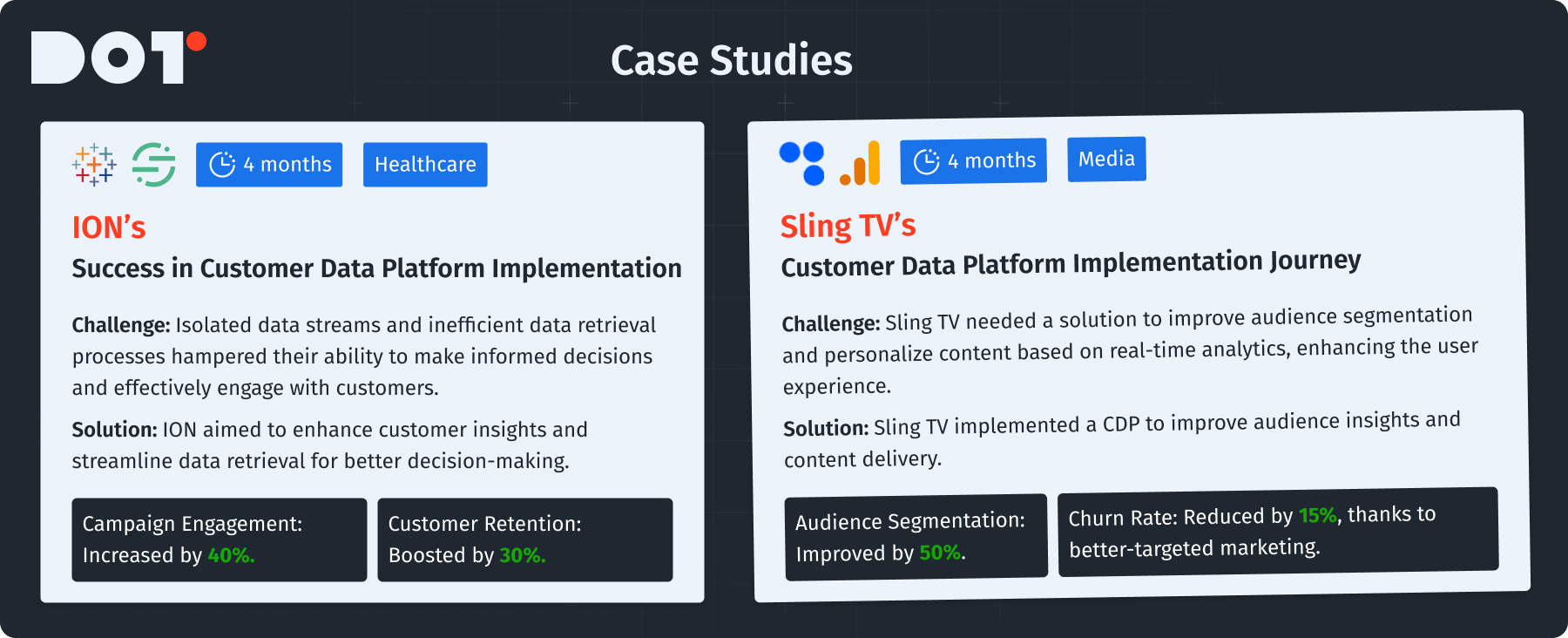
Checklist for Successful Customer Data Platform Implementation: A Step-By-Step Guide
Steps to Ensure Readiness
- Define clear business goals for the CDP that fit your broader organizational strategy.
- Build a dedicated project team with members from marketing, sales, IT, and customer service.
- Assess current data structures and requirements to support the new CDP.
- Choose a CDP that meets your needs based on defined features and successful product demos.
- Create a full plan for system integration with clear roles and responsibilities.
Ongoing Maintenance and Evaluation Considerations
- Set up a dedicated team to monitor data quality and governance, implementing effective data governance in CDPs.
- Regularly seek feedback from users to evaluate how the system performs.
- Make sure your team is ready to adapt the system as your business needs evolve.
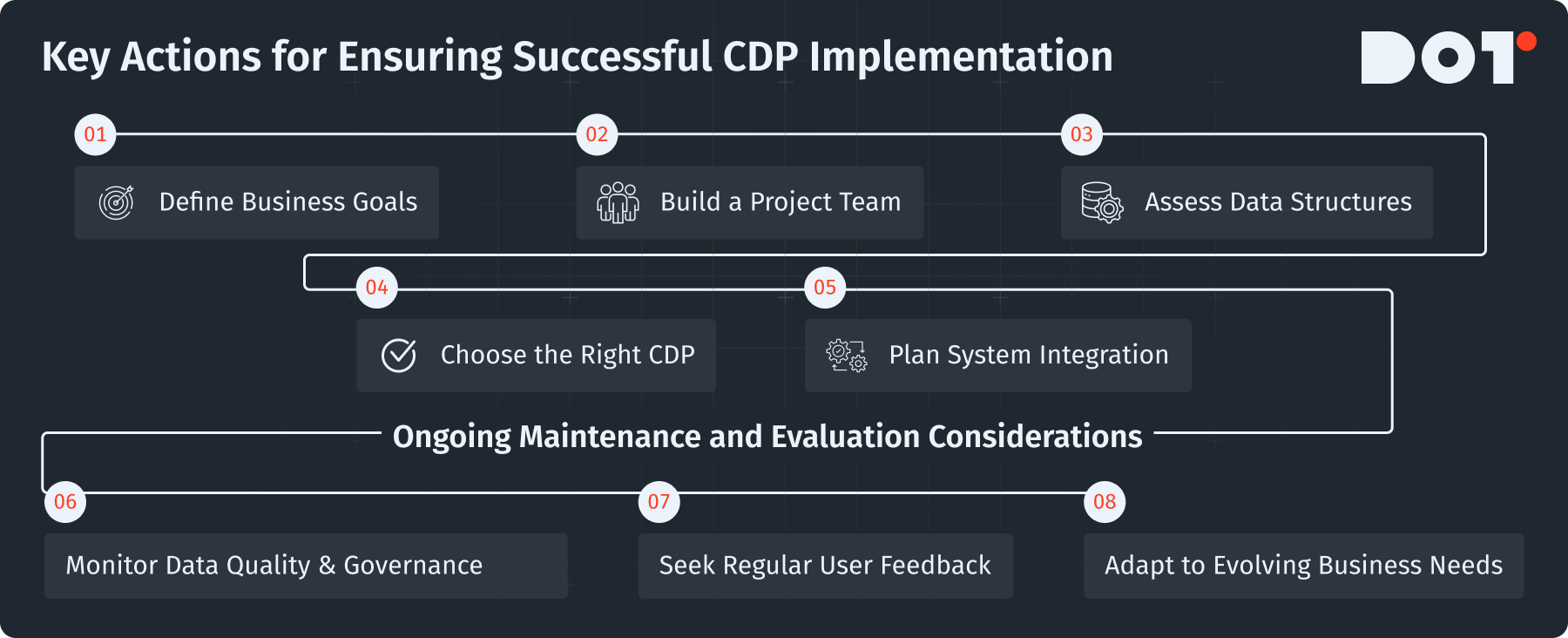
Summary
Summary
In summary, implementing a Customer Data Platform is not easy and involves several steps, like understanding business needs, choosing the right technology, and ensuring data quality. By following the detailed steps in this guide, your business can learn more about its customers and improve marketing effectiveness. The insights gained through customer data platform implementation will prove invaluable.
Final thoughts on successful customer data platform implementation: Keep evaluating and be ready to change for ongoing success with your CDP. Good communication and training will help your team succeed.
If this topic is top of mind for you, book a free 20-minute consultation with a Dot Analytics expert. We’re here to help you every step of the way!
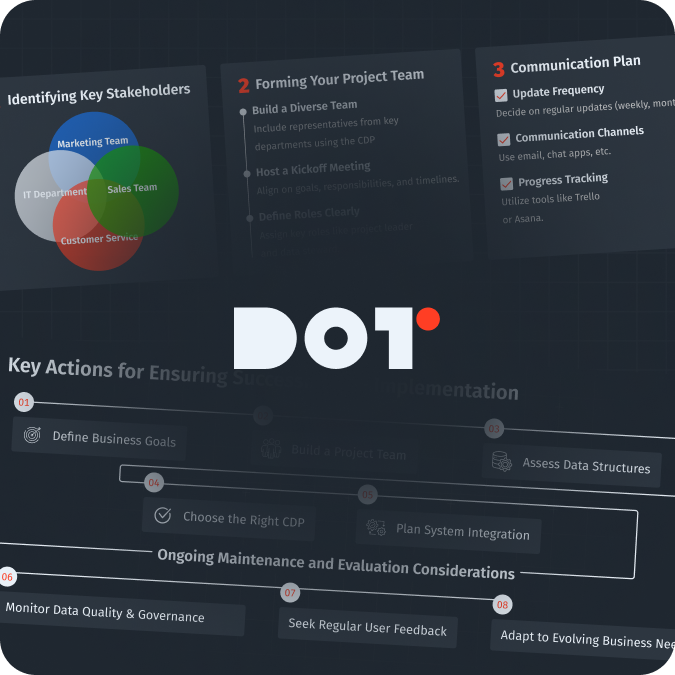



























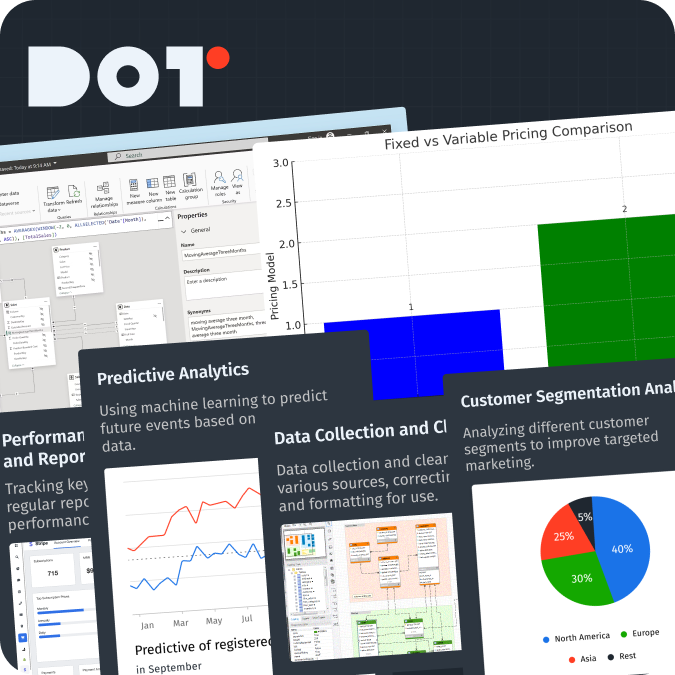
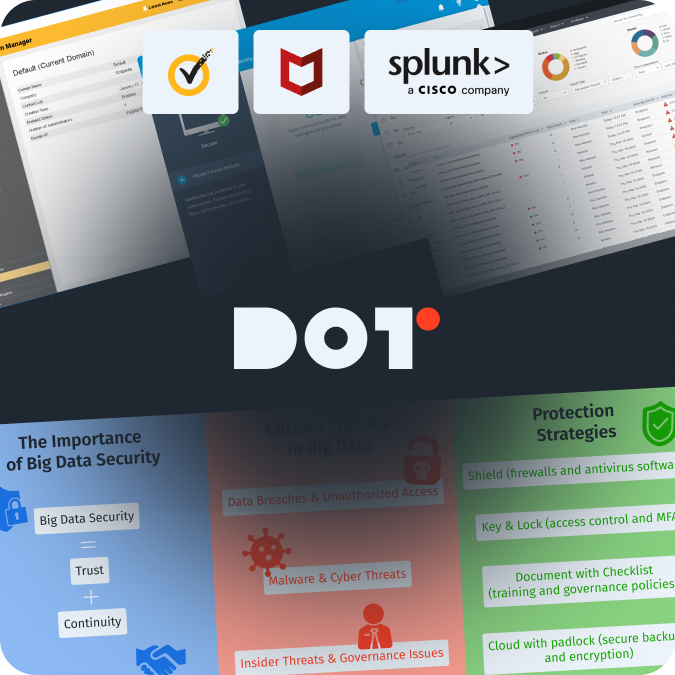
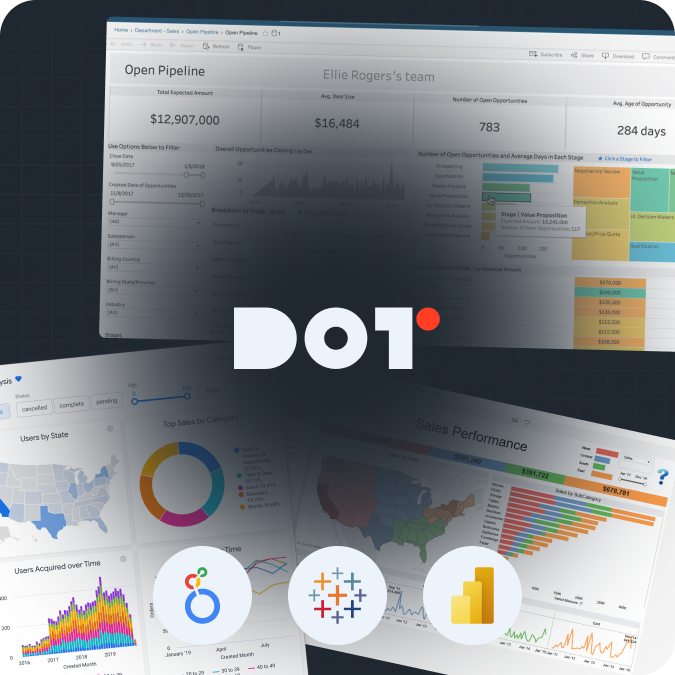
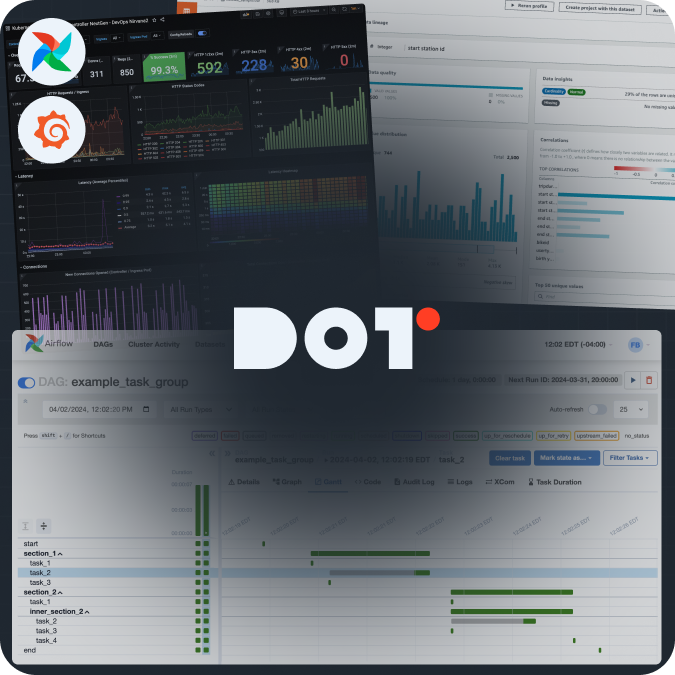

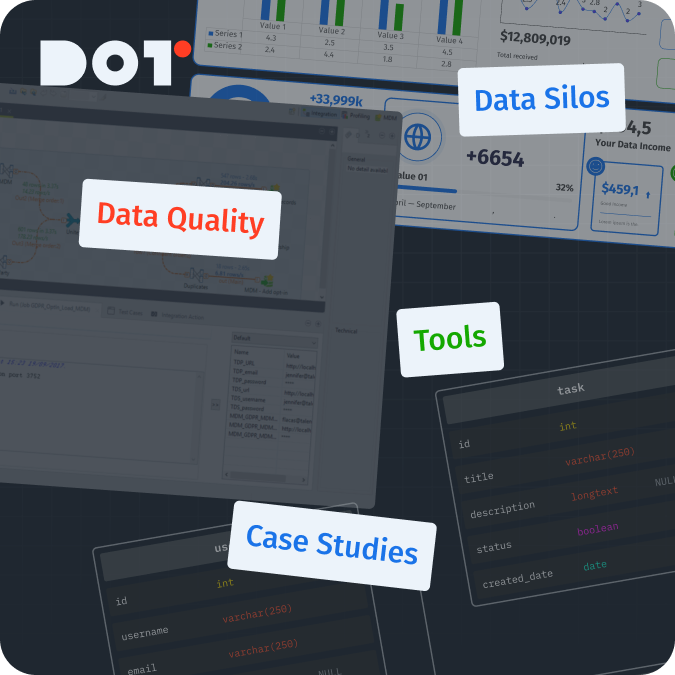
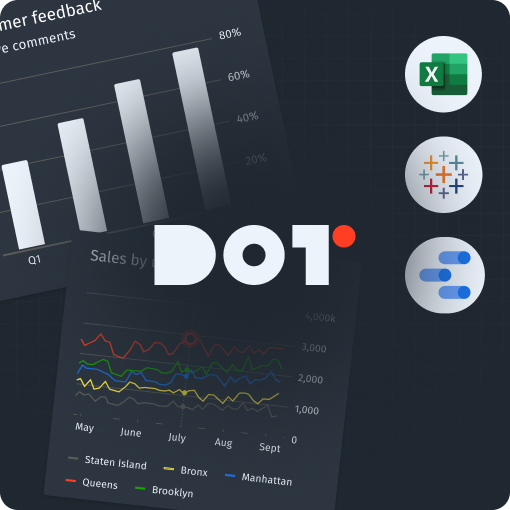

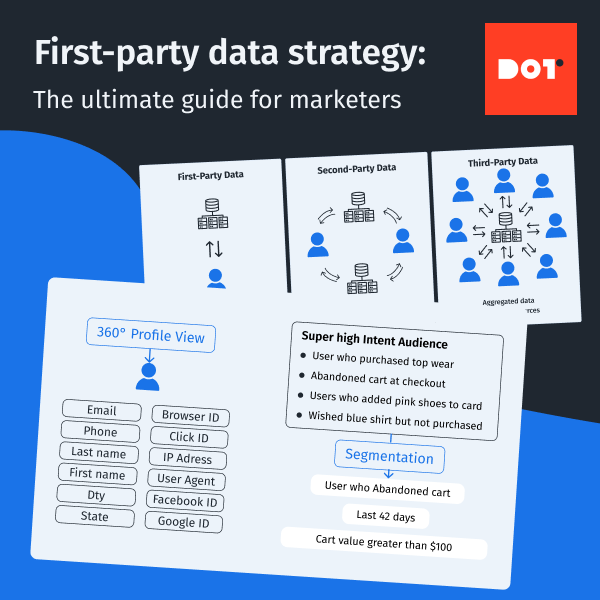
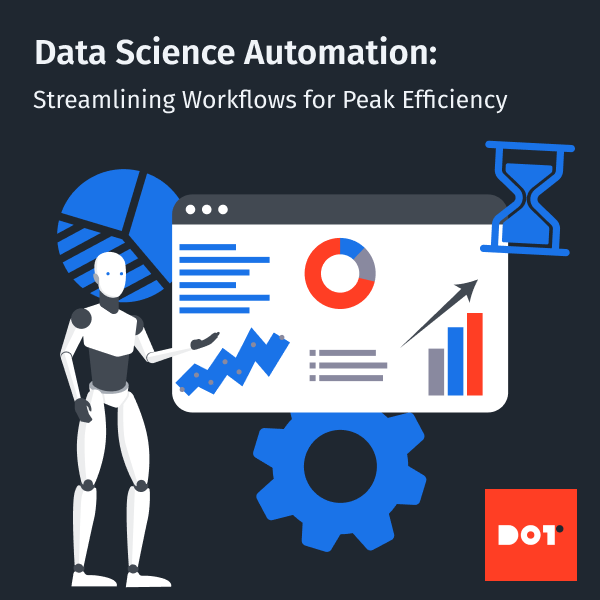
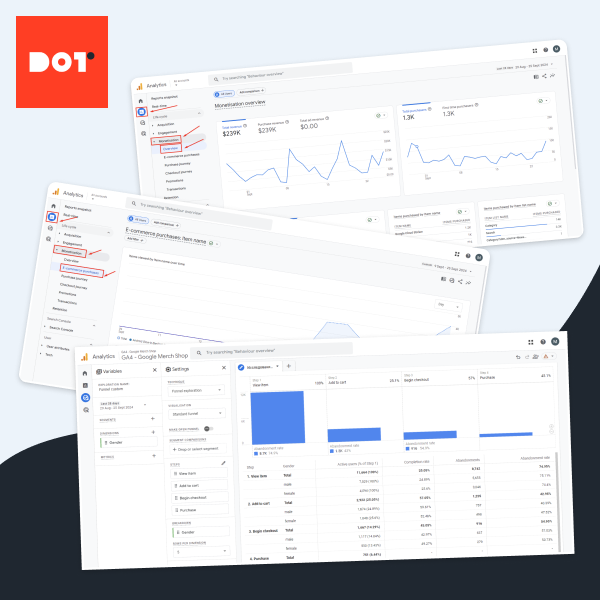
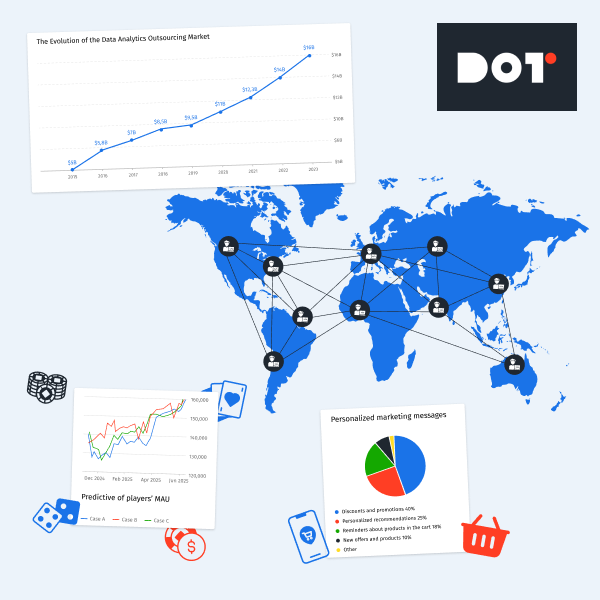
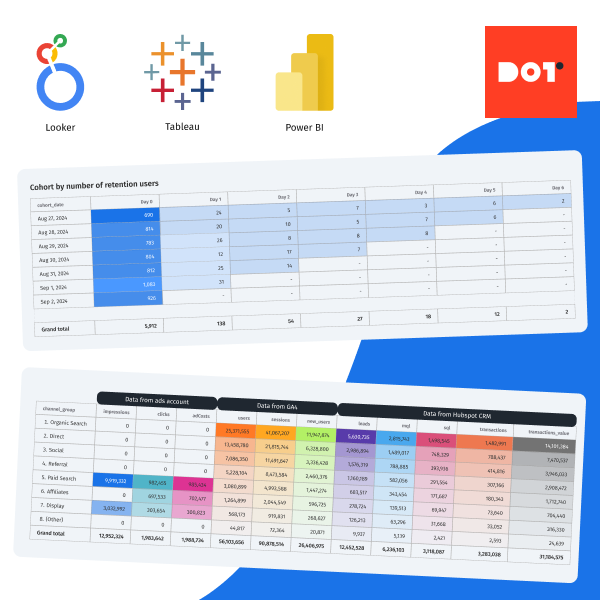
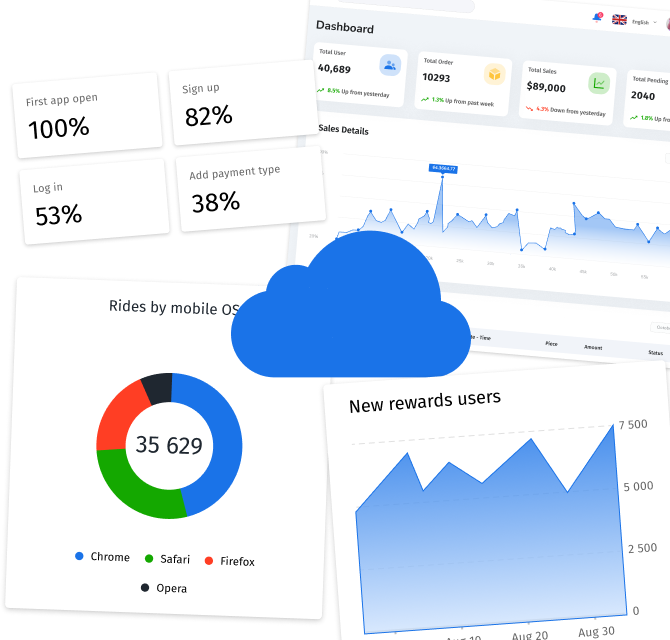
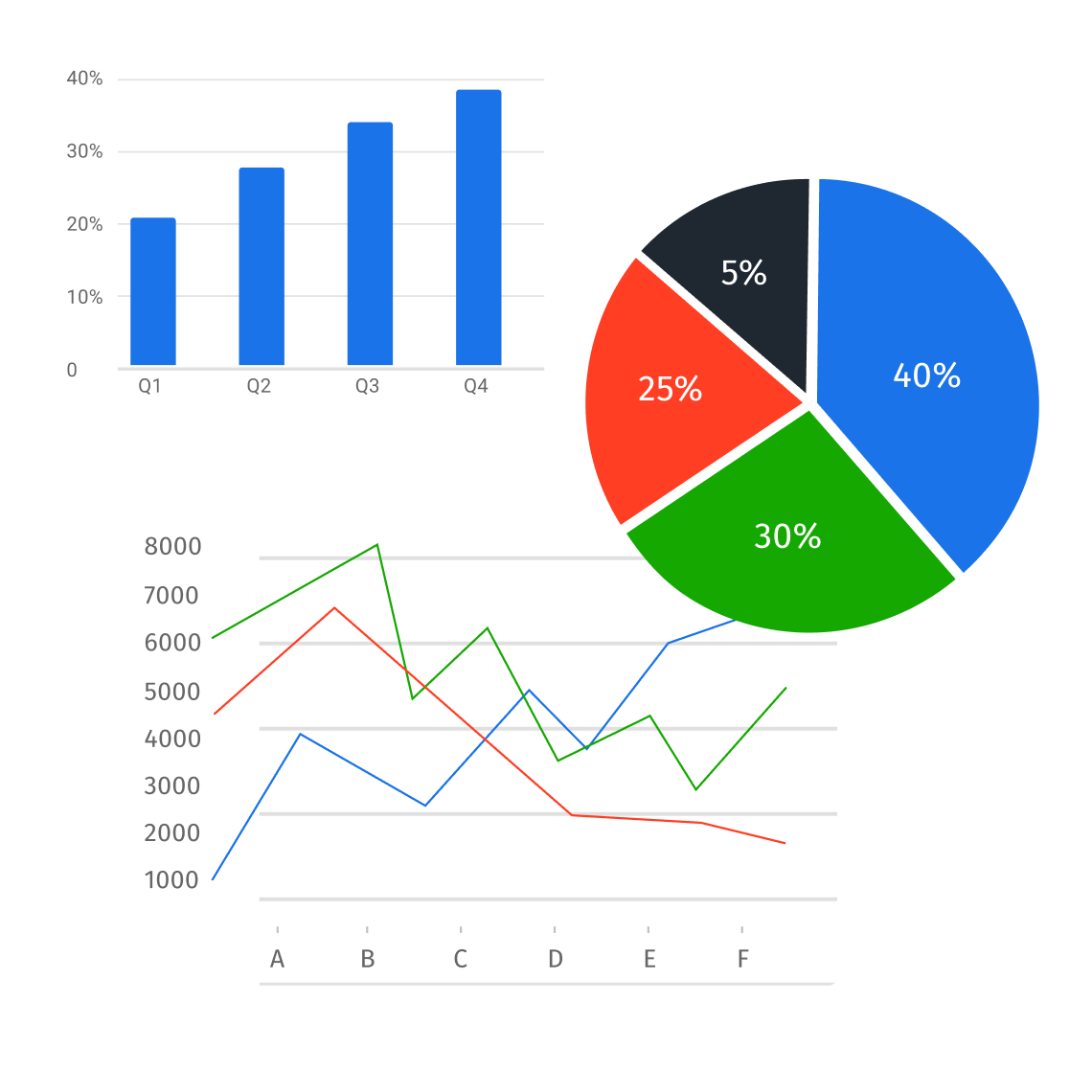
Leave a Reply